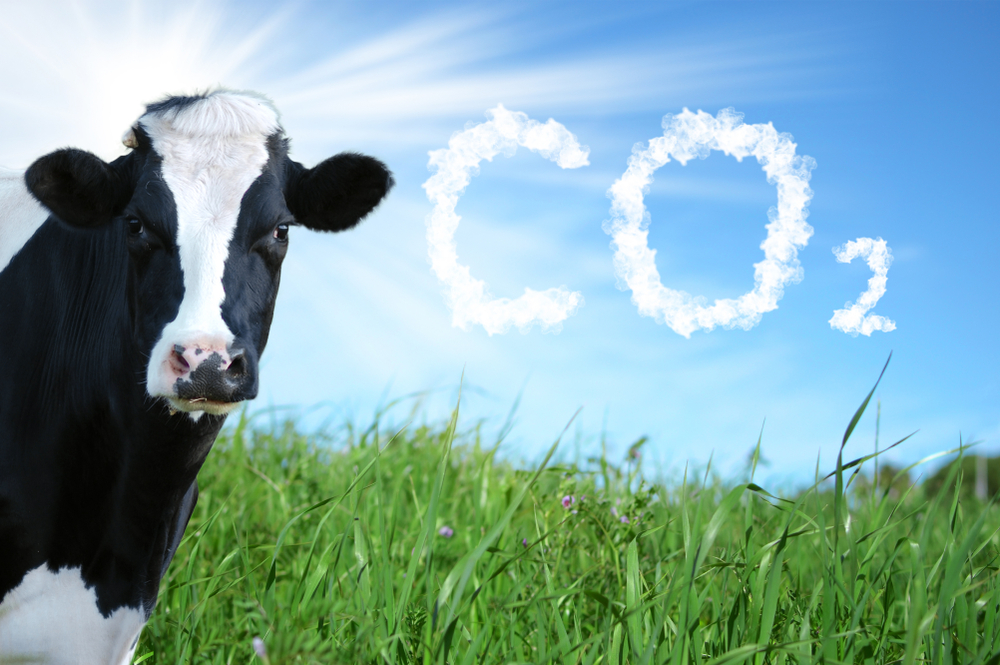Methane emissions from livestock are an important part of the climate change puzzle.
Livestock contributes significantly to global greenhouse gas emissions, raising urgent questions about the sustainability of the food system.
Responses range from farm innovation to dietary habit changes, but their effects vary widely across regions.
To address this complexity, you need to understand the roles of the various stakeholders and ask: Can we truly balance the balance between environmental sustainability and food security?
Why Methane Is Important: Impact on Livestock Climate
Methane is a powerful greenhouse gas that is more than 25 times stronger than carbon dioxide when it traps heat for 100 years.
Livestock, especially cattle, produce methane during digestion through intestinal fermentation. This is an unavoidable process.
Livestock production has expanded dramatically over the last few decades, and methane output has also intensified, increasing climate risks. Rising methane emissions promote more extreme weather, disrupt ecosystems and accelerate global warming.
It is essential to recognize the scale of this issue. This is because with a clear understanding, strategies can be designed to keep the food system resilient while reducing emissions.
From pastures to plates: how animal agriculture forms emissions
The environmental impact of animal agriculture is far beyond digestion. Feed production relies heavily on fertilizers, releasing another powerful greenhouse gas, nitrous oxide.
Expanding farmland and pasture often means deforestation, reducing the planet’s ability to absorb carbon.
When animals are raised, the supply chain of meat and dairy transport, processing and refrigerated products further increases emissions.
Waste management also poses challenges. If the fertilizer is not properly treated, it breaks down without oxygen and releases methane.
In summary, these interconnected stages reveal why reducing livestock emissions requires a system-wide perspective rather than focusing on a single source.
As diet and consumption patterns change, converting animal agriculture into low-emission systems becomes a central challenge in climate action.
Technological modifications or diet shifts? Competition routes to lower methane
When it comes to solutions, two approaches govern the discussion.
One pathway relies on innovations, such as feed additives that suppress methane during digestion, and anaerobic systems that capture methane from fertilizer and convert it to biogas.
These approaches often attract support as they promise to reduce emissions without fundamentally changing the way food is produced and consumed.
Other paths emphasize changing diets. Reducing meat and dairy consumption in favour of plant-based alternatives essentially reduces methane emissions and also offers potential benefits for human health.
Advocates argue that changing consumption patterns will address the root cause by reducing demand for livestock products.
Both strategies have their advantages and drawbacks. Technology reduces emissions within current systems, but may not address overconsumption, but dietary changes will go further, but face cultural and political resistance.
The real challenge lies in combining these approaches rather than viewing them as mutually exclusive.
Global North vs South: Unequal burden, Unequal solutions
Methane emissions are a global concern, but the responsibility and ability to deal with them is unevenly distributed.
In the global northern part, industrialized agriculture and high levels of consumption mean that the country has a large share of methane production. At the same time, they have the resources to invest in advanced technology and adopt sustainable practices.
In contrast, the South of the world has less per capita contributions, but they often suffer the most from the consequences of climate change. Many smallholder farmers rely on traditional methods that can produce methane, but often lack access to mitigation tools and financial support.
This imbalance underscores the need for a climate strategy that explains regional realities and ensures that emission reductions do not exacerbate global inequality.
Farmers, policies, markets: Who drives change?
The trajectory of methane emissions is shaped by farmers, policymakers and markets. Farmers make daily choices about practices and are guided by surrounding incentives and regulations.
Policy can promote sustainable agriculture, but it can also unintentionally increase emissions, such as fossil fuels and subsidies in favour of livestock production.
The market also exerts an influence. With growing consumer demand for sustainable food, producers will adapt, but multinationals will form supply chains in ways that can interfere or support progress.
Ultimately, lasting change depends on alignment between these actors, with farmers receiving fair incentives and markets that reward climate goals and low emissions practices.
Transition of Justice: Balance between Climate Goals and Food Security
Cleavage of methane cannot come at the expense of livelihoods or nutrition. For millions of people, livestock is the heart of income, culture and diet. A legitimate transition therefore needs to balance climate goals with food security needs.
This balance requires investment in sustainable practices that reduce emissions while protecting yields. Innovation enhances agriculture’s resilience, increases productivity, and ensures that climate action strengthens food systems rather than undermine them.
Equally important is to ensure marginalized communities are supported by resources and opportunities, and to ensure that climate transitions do not deepen inequality.
Reducing methane in a global food system requires a multifaceted approach. International collaborations explaining improved livestock management, technological innovation, a shift to plant-based diets, and regional differences.
By recognizing the interconnectedness of agricultural practices, global inequality, and stakeholder responsibility, effective and equitable solutions can be designed.
The path forward is a legitimate transition. It protects food security while achieving climate goals. Rethinking methane across the barn doesn’t just reduce emissions. It’s about creating a food system that is resilient, equitable and sustainable for everyone.
Source link

